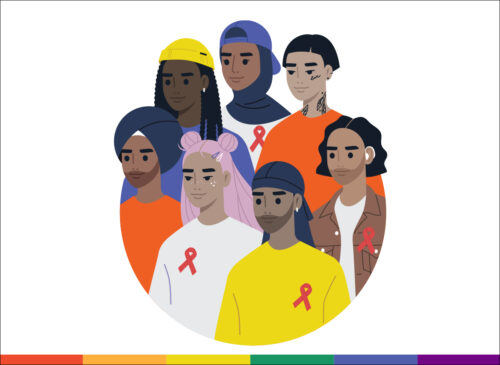
This the second of a three-part series. Read parts one and three.
The enormity of change
Change is difficult. It is threatening and uncomfortable; we like routine. While it is normal to feel some fear of change, most of us aren’t paralyzed by it and we manage to cope.
The fear of change generates many reactions, including avoidance, where one “rejects everything new. He creates his ‘comfort zone’ and is unwilling to come out of it. He prevents introducing anything new to achieve this goal” Moving, for example, is a major change in lifestyle that is upsetting for many people. Divorce and retirement are also high-stress change factors. So too are sudden changes in the workplace.
It is no surprise, therefore, that the enormity of change COVID-19 created in many workplaces, including postsecondary education, would elicit fear and anxiety in those suddenly having to teach and work remotely. I propose that this particular change constituted a greater challenge than many others. For example, if one moves from a beloved family home to another dwelling, one knows intuitively that the dwelling will have a kitchen, a bathroom, and places to sleep. One knows that the roof will likely keep the family dry and that the heating/cooling system, if there is one, will moderate the temperature for comfortable living. The new locale will be different but there are no great unknowns. Additionally, it is likely that the new home has already been inspected.
For many, the move to online teaching has none of these reassurances. In most cases, teachers who have been confronted with the need to vacate their brick-and-mortar classrooms and set up shop in front of their computers have not participated in this form of teaching and learning before. Even if they are technically savvy, they may lack an intuitive familiarity with the process. The fear factor potential is very large and very real.
According to Steven Appelbaum, a professor of organizational behaviour at Concordia University, when computers were first being introduced into offices and businesses, professional instructors learned that executives were hesitant to take training sessions with their employees because they feared embarrassment. Similarly, the potential for embarrassment within a teaching environment heavily dependent on computer platforms can also serve as a fear-producing inhibitor to adaptation and change.
Knowns and unknowns
We often don’t know what we don’t know. Although perhaps popularized by American Secretary of Defense Donald Rumsfeld in 2002, this adage is a representation of psychology concepts relating to the self, our relationships with knowledge, and with others. The importance of knowns and unknowns as they relate to the shift to remote teaching is this: The range of change necessary for transitioning from traditional classroom teaching to online teaching is so vast, so newly paradigmatic, that it cannot be foreseen or fathomed by many of those about to embark on the transition journey. They can’t know what they don’t know. One underlying factor that contributes to the “not knowing” is a lack of familiarity with the study of scholarship in higher education.
Scholarship in traditional postsecondary institutions
The issue of scholarship is discussed academically and conceptually in Ernest Boyer’s seminal work Scholarship Reconsidered. However, reflecting on Boyer’s work 25 years later, Beth Kern, Gwynn Mettetal, Marcia Dixson, and Robin K. Morgan question the scope and effectiveness of the dissemination of scholarship knowledge in practice: How pervasive, beyond the education field, is the topic of scholarship? The criticism of scholarship in postsecondary institutions is prevalent in many areas, including:
- While “smart institutions will invest in faculty,” many institutions attempt to cut costs by using non-full-time, non-tenure-track, adjunct faculty. In these cases, teaching can become a commodity, rather than a highly developed skill.
- Skills such as critical and flexible thinking, social intelligence, and leadership cannot be learned by methods of teaching that only privilege content acquisition.
- Technology is a tool that should not be confused, or allowed to undermine or diminish, the primacy of the educator.
- Faculty reluctance to change and adapt is often due to the absence of support, rewards, or incentives for doing so.
- Funding is often dependent on political sway.
- Innovative leadership must—and often doesn’t—respond to current world issues and learning needs.
- University engagement and lifelong learning need to be redefined for the new realities of the twenty-first century.
The points above touch on many important issues in higher education. Layered on top of those, but also reflecting some of them, is another set of issues about which this article is concerned: the transition to online teaching and learning from that which has traditionally been defined by a classroom, students seated in chairs, and a teacher at the front of the classroom or lecture hall. The necessary categories of changes wrought by the sudden disappearance of these factors were identified in part one of this series: cognitive, social, managerial, and technical.
Faculty coming to terms with change
Faculty who have been required to transition to online teaching and learning because of the current COVID crisis find themselves in a challenging position that is quite different from what might be considered a normal transition; that is, there is an urgency to move online as quickly as possible. Additionally, for institutions, there looms the spectre of losing students and decreased enrolment, both at the current moment and in the future if the transitioned courses are not well received.
Up until the onslaught of this pandemic, faculty who needed or wanted to transition to a new style of teaching (online or otherwise) might have had time and institutional support on their side. The COVID-19 pandemic redefined this reality, removing the comfort of time and stretching existing institutional supports thin. There are numerous “how-to” sites, journal articles, and other internet resources about online teaching for those who can find them, but they are poor substitutes for the mentors and institutional teaching and learning units struggling to resource the tens of thousands of faculty making the shift online.
Long-time online and distance learning educators have experienced and researched the issues connected with such paradigm shifts. We have worked with faculty who have wanted to learn new approaches to distance education. Teaching and learning units have long offered instruction and guidance in this area. Indeed, the University of Alberta offered training for faculty in the early 1990s, when “surf the ’Net” was popular terminology. In fact, in 1998, a conference in South Carolina was titled “Stop Surfing: Start Teaching.”
Part three of this article will describe and analyze the range and types of challenges being faced by instructors transitioning online. In it, I will reflect on research and personal experience; and use Zane Berge’s framework for successful computer-mediated communication, which, to this day, continues to efficiently capture many of the issues in the field of online education.
Stay tuned for the circus metaphor!
This the second of a three-part series. Read parts one and three.
Dr. Dianne Conrad is a long-time distance educator, researcher, and author.










